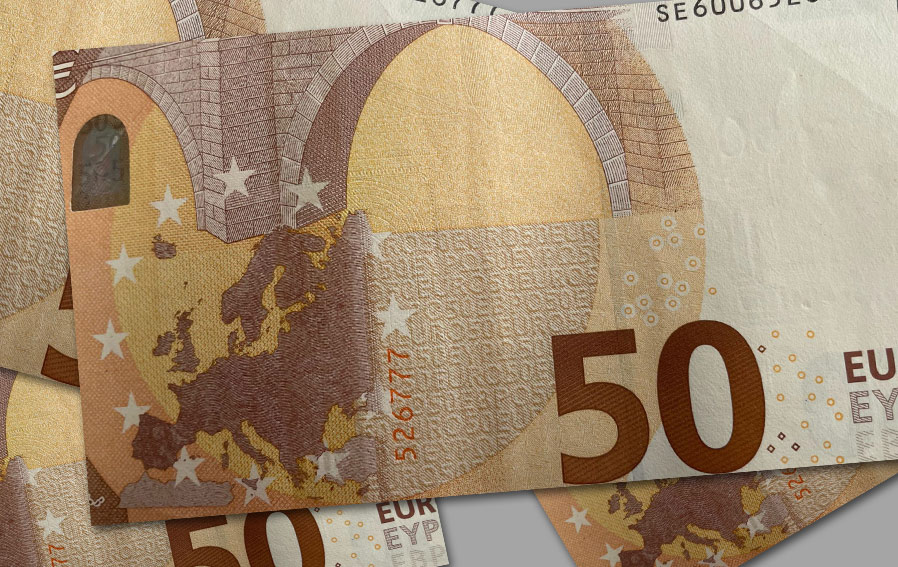Always trouble around the Euro
We all have colorful euro bills in our hands every day, but hand on heart: do you know what is depicted on these banknotes? I also had to look it up: on the front there are examples of architecture from different centuries and next to it the hologram of mythical Europe. But this article is about the reverse, where all the banknotes feature a bridge symbol and – here it comes – a stylized map of Europe in a circle of stars. But you have to look very closely to recognize that this map contains a relief that is supposed to reflect the contour lines of the continent.
The relief depiction goes back to an Austrian cartographer who, according to his own account, „traveled around the globe to create his maps“. He then used satellite images and digital files to depict Europe, shifting coastlines and a number of other geographical features before reworking the surface structures and coloring the result. In 1997, the cartographer transferred all rights to this work to the Austrian Central Bank, which paid the equivalent of around 2,200 euros for it. The rights of use were later transferred to the ECB, which found the European relief so striking that it had it printed on the back of all euro bills.
Now a lawsuit for additional compensation amounting to 5.5 million euros is pending. How did this come about?
It all began in 2014 when the cartographer, now 87 years old, proposed a new mapping project for the ECB to finance. As part of a pre-contractual review of the potential rights of use arising from this, the cartographer’s lawyer came across the „old case“ and got the ball rolling.
Neither the same work nor causality shown
In May 2020, the Frankfurt Regional Court (LG) had to rule on the claim at first instance (1). However, the court found the additional claim of 2.5 million euros immediately and a further 3 million euros for the next 30 years to be unfounded. The image file provided to ÖLZ at the time had been used as the basis for the design, but had then been changed to such an extent that an independent new work had been created.
The 11th Civil Senate of the Higher Regional Court (OLG) of Frankfurt, which is responsible for copyright law, agreed with this in its ruling (2). The presentation used for the banknotes was not the same work, nor was there a connection between the use of the map of Europe and the so-called seignorage income of the ECB, in which the plaintiff had claimed a share. According to the judges, this income for banknote handling would also have arisen anyway.
This is reminiscent of the dispute over the question of who should be credited with the design of the euro symbol. The European Commission owns the copyrights and is of the opinion that the symbol is a joint achievement of four unnamed employees. However, it is more likely that the creation goes back to Arthur Eisenmenger, the former chief graphic designer of the EC. However, he never saw a penny for his design. It remains to be seen whether the Austrian cartographer will also come away empty-handed. In any case, his lawyer has already indicated that he intends to take the case to the German Federal Court (BGH). As the OLG Frankfurt has blocked this way, an appeal against this decision (“Nichtzulassungsbeschwerde”) would first have to be successful. Either way: to be continued.
(1) LG Frankfurt, Az. 2-06 52/21 (18.05.2024)
(2) OLG Frankfurt, Az. 11 U 83/22 (29.02.2024)

